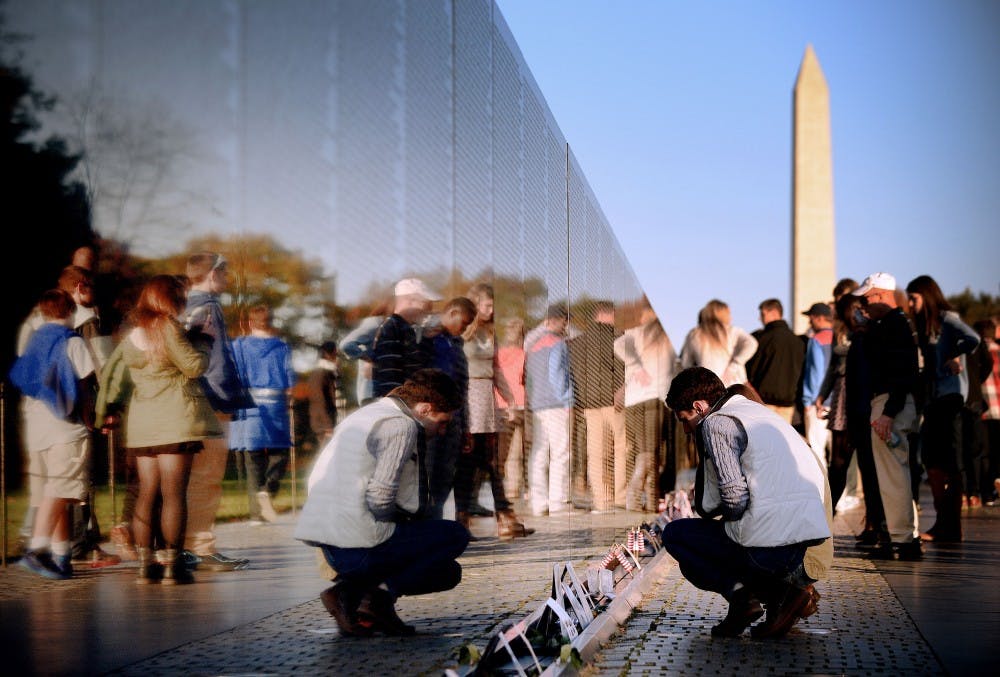The idea of public art as memorials and commemoration is nothing new. There are the heads of obas, rulers of the kingdom of Benin in what is now Nigeria, that began commemorating leaders in the year 1300. There is the Jing gui, a bronze bowl honoring a young archer in China 3,000 years ago. And of course, statues of pharaohs in ancient Egypt.
Since then, constellations of memorials to human triumph and suffering have popped up around the world. But while the famous memorials of ancient times often commemorated individuals, most modern memorials I can think of today — the Marine Corps War Memorial, the World War II memorial, the Monument to the Great Fire of London — focused less on the individual.
Perhaps the most famous memorial of all, the Vietnam War Memorial, opened 36 years ago this month. Designed by Maya Lin, a then-unknown architect, the monument managed to both commemorate an entire war and to accomplish something that to me is what makes memorials art: capturing memories and individual stories.
Combining minimalism and earth art, the Vietnam War Memorial is made up of two wedges of black granite walls that are inscribed with the names of the 58,307 U.S. military personnel who died in the war.
The idea was simple. We walk along the walls, reading the names of the dead etched into marble. We feel the weight of each name and their combined power. We are left with our thoughts and memories.
But her vision was met with skepticism and anger from those who wanted a more traditional memorial, one adorned with patriotic emblems of eagles or flags. The documentary “Maya Lin: A Strong Clear Vision" told the story of the memorial's design process, and in it, one war veteran, a cynic of the plan, called the memorial “insulting” and “a black scar.”
The memorial was more than drab bronze statues hoisting American flags into the air. Without the typical triumphant allegories and a red-white-and-blue, patriotic dog and pony show, the Vietnam War Memorial tells stories in a direct way that doesn’t coddle us but captures the grief-stricken, contradictory feelings Americans harbored toward the war.
As people touch, mourn and leave offerings of flowers beside the names of loved ones, the wall shifted memory from the war to its victims. A simple, stripped-down list depicts individuals, not a generalized image of a soldier carrying a flag. As a result, grieving became personal and the deaths became singular stories that called us to remember, not just the war, but each life lost.
This individualization of memorials reminds me of the monuments, from the Royal Artillery Memorial and the Monument to the Great Fire of London, that I saw last summer while in London. Each monument carried haunting memories and loomed, tall and overwhelmingly large, over surrounding streets.
Maybe it’s because this history is not mine and I can’t connect to it in the way Londoners would, but despite how long I spent circling them, my mind always wandered to “OK, what next?” or to the cute cafe down the street.
That experience contrasted with the afternoon I spent exploring Postman’s Park in London, where I perused countless plaques commemorating ordinary people who died saving the lives of others.
By reading the plaques of what I later learned was called the Memorial to Heroic Self-Sacrifice, I learned about a woman who died after giving her life belt to another passenger of a sinking ship, a daughter of a bricklayer who died saving three children from a burning house and a man who saved a woman from suicide before being run over by a train in her place.
As I scribbled down some of the text into my notebook, pored over and engaged with each story, it made me a bit emotional in a way the other monuments that focused on patriotic symbols over individual stories did not. And a collection of plaques in a park became my favorite memorial I saw in London.
This concept of turning memorials into mournful reflections on individual stories, rather than a patriotic encounter, can also be seen in the Oklahoma City National Memorial, which sets aside a sculpture of an empty chair for each victim of the Alfred P. Murrah Building bombing. There’s also the AIDS Memorial Quilt, a traveling memorial made up of more than 48,000 panels commemorating the lives of people who have died of AIDS.
Being in the field I am, I often compare things to journalism, where we choose one person or just a handful to represent a larger story. We include details and anecdotes, telling the story of an individual that reflects the story of many — something that’s almost always more moving than speaking in generalities or cliched symbols. Maybe it’s the same thing with the memorials that commemorate individuals.
Memorials connect us to the past, encouraging us to remember and respect those who have died. Good memorials and good art outlast, sparking conversation so that memories are kept alive after the memorialized event fades into history books. Sometimes the horrors of war and tragedy seem to get further and further away as years pass, but individual stories are always visceral.






